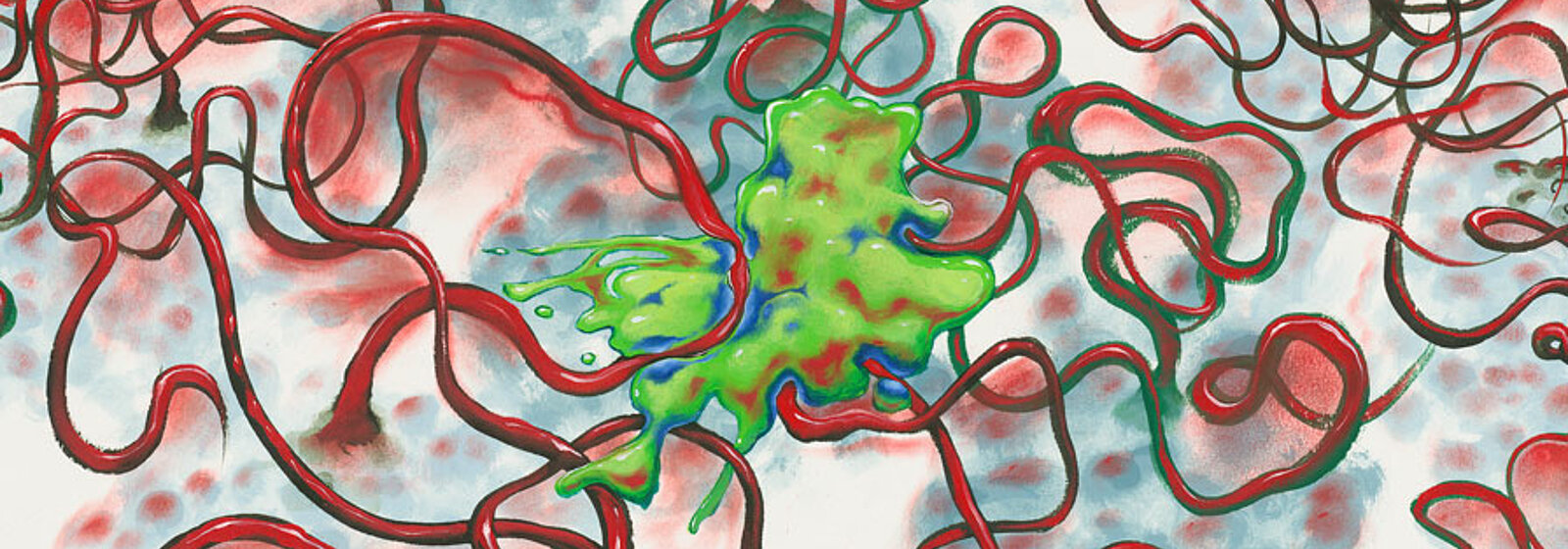July 13, 2020 - by Simone Ulmer
Microtubules (MTs) composed of fine protein structures are an elementary component of the cytoskeleton. They form a system of tubes that not only makes the cell mobile, but also enables the transport of proteins and plays a central role in cell division by forming the spindle apparatus that pulls the chromosomes into the daughter cells that are formed.
The microtubule system serves as a highway for intracellular traffic, writes Yaakov Levy, professor in the Department of Structural Biology at the Weizmann Institute of Science in Rehovot, Israel, and his doctoral student Lavi S. Bigman in their study recently published in the PNAS. It acts as a pipeline, constructed from protofilaments strung together to form the tiny tube. The basic building blocks of the filaments are monomers, the so-called α/β hetero dimers, which are flexible and disordered at the end of the tubules. These curious appendages are known as tails, the function of which has not yet been completely clarified. According to Levy, previous studies have suggested that these tubulin tails influence the function of the microtubules: "There is evidence of a link between a misregulation of the chemical properties of tubulin tails and various diseases, such as male infertility in mice, colon cancer and neurodegenerative diseases.”
Continuous conversion of the tubulin tails
It is known that these tubulin tails consist of approximately 15 to 25 amino acids and are subject to frequent "remodeling". This posttranslational change includes, for example, polyglutamylation, a process directly linked to neurodegeneration in mice. During polyglutamylation, polyglutamate chains are attached to the end of the MTs, binding to the tails of the α/β hetero dimers. Although the cause of the constant changes in the tubulin tails is unclear, it is suspected that their remodeling regulates the function of MTs – ideally in order to maintain proper cell function. This may be accomplished through the regulation and transport of important proteins, including motor proteins, along the MTs, which is essential for cell division and for transporting cell organelles or vesicles.
Using computer simulations on the CSCS supercomputer "Piz Daint", the researchers have now simulated these tails in order to study how they influence a specific mode of transport known as diffusion for three different microtubule-binding proteins along the MTs. The high flexibility of the tubulin tails makes it impossible to observe their three-dimensional structure with conventional imaging techniques such as X-ray crystallography or cryoelectronic microscopy. The researchers therefore simulated the structure and dynamics of the tubulin tails and the diffusion of proteins along the microtubules under certain assumptions: while they regarded the microtubules as rigid, their tails are always flexible and electrostatically charged to different degrees.
Tubulin tails seem to regulate protein transport
For the simulations, they used what is known as the coarse-grained molecular dynamic (MD) method. Unlike a typical MD simulation, this method did not require researchers to describe the entire atomistic system. This enabled them to study processes taking place over longer time scales, such as diffusion, that are otherwise very computationally expensive and hence difficult to simulate at full atomistic resolution. They then validated the coarse-grained simulations by comparing them to atomistic simulations of the microtubule. “Thanks to the computational resources provided by CSCS and their Piz Daint supercomputer, we were able to study diffusion also in atomistic detail – an achievement that would have not been possible without the multiple GPU nodes available on Piz Daint”, says Levy.
According to the researchers, the simulations provide more direct evidence that the tubulin tails regulate protein transport along MTs through electrostatic exchange at molecular levels. The reorganisation of the tubulin tails through polyglutamylation slows down the diffusion of the simulated proteins and their interaction with the MT; laterally, however, polyglycilation accelerates the diffusion of the simulated proteins across the individual MT protofilaments. The researchers therefore assume that the proteins can circumvent barriers by moving laterally. "Tubulin tails act as a kind of speed bumper on the cellular 'road' of MTs and slow down MT-based transportation. The addition of polyglutamate chains can be viewed as making the bumpers higher, and hence transportation slower," said Levy.
Simulations confirm central role
The results support the assumption that tubulin tails play a central role in the diffusion of proteins along MTs. The researchers suspect that this polyglutamylation could also lead to slower movement of other proteins as they translocate along the intracellular highway. They believe that the tubulin tails might also influence the mechanical stability of microtubules and its interaction with severing enzymes and motor proteins. The findings presented in the work of Bigman and Levy may pave the way for further investigations of the functional role of tubulin tails and their modifications at the molecular level and eventually for further understanding of their linkage with diseases. However, to prove this, further research studies are needed.
Image above: In this picture (oil and acrylic on paper), the chemical properties of protein-microtubule interactions are represented in an artistic way. The negatively charged characteristics of the microtubule and its disordered tails are depicted by the red color, while the positive electrostatic of the diffusing protein (shown in green) are depicted by the blue color. The painting aims to capture the different dynamics of the tails as well as the diffusion of the protein by the nature of the brush strokes. (Painting by Daniel Philosoph)
Video 1: Protein diffusion along a wild type MT (without modified tubulin tails) in an atomistic molecular dynamic simulation. (Video: PNAS)
Video 2: Protein diffusion along polyglutamylated MT in a coarse-grained molecular dynamic simulation. (Video: PNAS)
References:
Bigman LS & Levy Y: Tubulin tails and their modifications regulate protein diffusion on microtubules, PNAS (2020), https://doi.org/10.1073/pnas.1914772117
